Related Research Articles
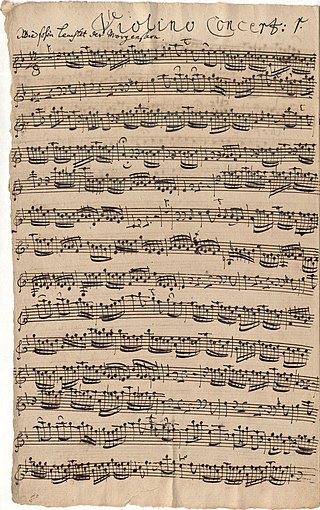
Wie schön leuchtet der Morgenstern, BWV 1, is a church cantata for Annunciation by Johann Sebastian Bach. In 1725, when the cantata was composed, the feast of the Annunciation coincided with Palm Sunday. Based on Philipp Nicolai's hymn "Wie schön leuchtet der Morgenstern" (1599), it is one of Bach's chorale cantatas. Bach composed it in his second year as Thomaskantor in Leipzig, where the Marian feast was the only occasion during Lent when music of this kind was permitted. The theme of the hymn suits both the Annunciation and Palm Sunday occasions, in a spirit of longing expectation of an arrival. As usual for Bach's chorale cantata cycle, the hymn was paraphrased by a contemporary poet who retained the hymn's first and last stanzas unchanged, but transformed the themes of the inner stanzas into a sequence of alternating recitatives and arias.

The cantatas composed by Johann Sebastian Bach, known as Bach cantatas, are a body of work consisting of over 200 surviving independent works, and at least several dozen that are considered lost. As far as known, Bach's earliest cantatas date from 1707, the year he moved to Mühlhausen, although he may have begun composing them at his previous post in Arnstadt. Most of Bach's church cantatas date from his first years as Thomaskantor and director of church music in Leipzig, a position which he took up in 1723.
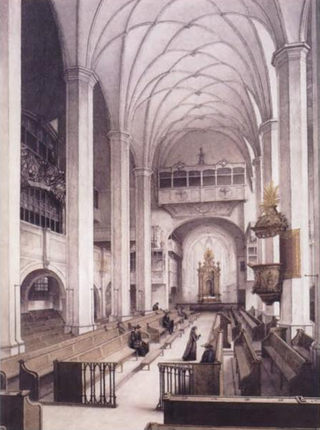
Herr, wie du willt, so schicks mit mir, BWV 73, is a church cantata by Johann Sebastian Bach. He composed it for the third Sunday after Epiphany and first performed it in Leipzig on 23 January 1724. It was probably composed shortly before the first performance.

Wer weiß, wie nahe mir mein Ende?, BWV 27, is a church cantata by Johann Sebastian Bach. He composed it in Leipzig for the 16th Sunday after Trinity and first performed it on 6 October 1726.
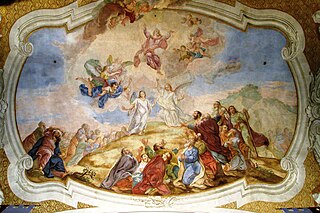
Wer da gläubet und getauft wird, BWV 37, is a cantata by Johann Sebastian Bach, a church cantata for the feast of the Ascension of Jesus. Bach composed it in Leipzig and first performed it on 18 May 1724.

Jesu, nun sei gepreiset, BWV 41, is a church cantata by Johann Sebastian Bach. He composed the chorale cantata in Leipzig for New Year's Day and first performed it on 1 January 1725 as part of his second cantata cycle. It is based on the hymn by Johannes Hermann (1591).

Johann Sebastian Bach composed the church cantata Schwingt freudig euch empor, BWV 36, in Leipzig in 1731 for the first Sunday in Advent. He drew on material from previous congratulatory cantatas, beginning with Schwingt freudig euch empor, BWV 36c (1725). The Gospel for the Sunday was the Entry into Jerusalem, thus the mood of the secular work matched "the people's jubilant shouts of Hosanna". In a unique structure in Bach's cantatas, he interpolated four movements derived from the former works with four stanzas from two important Advent hymns, to add liturgical focus, three from Luther's "Nun komm, der Heiden Heiland" and one from Nicolai's "Wie schön leuchtet der Morgenstern". He first performed the cantata in its final form of two parts, eight movements, on 2 December 1731.
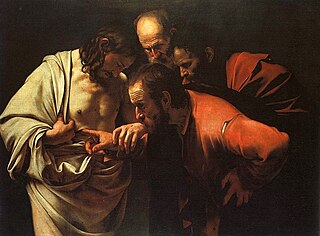
Am Abend aber desselbigen Sabbats, BWV 42, is a church cantata by Johann Sebastian Bach. He composed it in Leipzig for the first Sunday after Easter and first performed it on 8 April 1725.
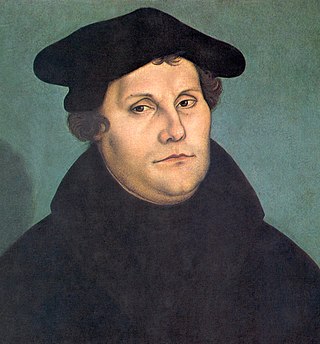
Johann Sebastian Bach composed the church cantata Nun komm, der Heiden Heiland, BWV 62, in Leipzig for the first Sunday in Advent and first performed it on 3 December 1724. The chorale cantata is based on Martin Luther's Advent hymn "Nun komm, der Heiden Heiland". It is part of his chorale cantata cycle.

"Wie schön leuchtet der Morgenstern" is a Lutheran hymn by Philipp Nicolai written in 1597 and first published in 1599. It inspired musical settings through centuries, notably Bach's chorale cantata Wie schön leuchtet der Morgenstern, BWV 1, but also vocal and instrumental works by Baroque composers, Peter Cornelius, Felix Mendelssohn, Max Reger, Hugo Distler, Ernst Pepping, Mauricio Kagel and Naji Hakim.

Erschallet, ihr Lieder, erklinget, ihr Saiten!, BWV 172, is a church cantata by Johann Sebastian Bach, composed in Weimar for Pentecost Sunday in 1714. Bach led the first performance on 20 May 1714 in the Schlosskirche, the court chapel in the ducal Schloss. Erschallet, ihr Lieder is an early work in a genre to which he later contributed complete cantata cycles for all occasions of the liturgical year.

Johann Sebastian Bach composed the church cantata Ich geh und suche mit Verlangen, BWV 49, in Leipzig for the twentieth Sunday after Trinity Sunday and first performed it on 3 November 1726. It is a solo cantata, a dialogue of soprano and bass.

Bringet dem Herrn Ehre seines Namens, BWV 148, is a cantata by Johann Sebastian Bach, a church cantata for the 17th Sunday after Trinity. Bach composed it in Leipzig in 1723 or 1725.

Johann Sebastian Bach composed the church cantata Ich elender Mensch, wer wird mich erlösen, BWV 48, in Leipzig for the 19th Sunday after Trinity and first performed it on 3 October 1723.
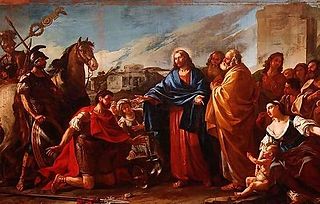
Johann Sebastian Bach composed the church cantata Ich glaube, lieber Herr, hilf meinem Unglauben, BWV 109, in Leipzig for the 21st Sunday after Trinity and first performed it on 17 October 1723.

Christen, ätzet diesen Tag, BWV 63, is a church cantata by Johann Sebastian Bach. He composed the Christmas cantata for the First Day of Christmas, possibly in 1713 for the Liebfrauenkirche in Halle. He performed it again for his first Christmas as Thomaskantor in Leipzig, on 25 December 1723.

Johann Sebastian Bach composed the church cantata Christus, der ist mein Leben, BWV 95 in Leipzig for the 16th Sunday after Trinity and first performed it on 12 September 1723.

Was mein Gott will, das g'scheh allzeit, BWV 111, is a cantata by Johann Sebastian Bach for use in a Lutheran service. He composed the chorale cantata in Leipzig in 1725 for the third Sunday after Epiphany and first performed it on 21 January 1725, as part of his chorale cantata cycle. It is based on the hymn by Albert, Duke of Prussia, published in 1554, on the topic of the Christian's acceptance of God's will.
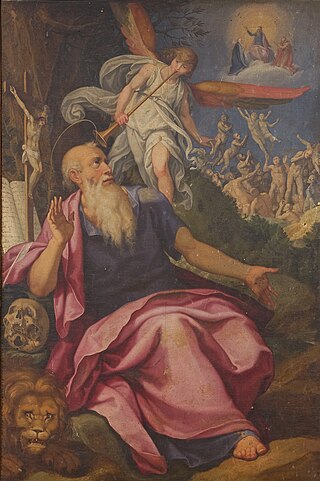
Herr Jesu Christ, wahr' Mensch und Gott, BWV 127, is a cantata by Johann Sebastian Bach for use in a Lutheran service. He composed the chorale cantata in 1725 in Leipzig for the Sunday Estomihi, the Sunday before Lent. It is based on Paul Eber's 1582 hymn in eight stanzas "Herr Jesu Christ, wahr Mensch und Gott". Bach first performed it on 11 February 1725.
There are 52 chorale cantatas by Johann Sebastian Bach surviving in at least one complete version. Around 40 of these were composed during his second year as Thomaskantor in Leipzig, which started after Trinity Sunday 4 June 1724, and form the backbone of his chorale cantata cycle. The eldest known cantata by Bach, an early version of Christ lag in Todes Banden, BWV 4, presumably written in 1707, was a chorale cantata. The last chorale cantata he wrote in his second year in Leipzig was Wie schön leuchtet der Morgenstern, BWV 1, first performed on Palm Sunday, 25 March 1725. In the ten years after that he wrote at least a dozen further chorale cantatas and other cantatas that were added to his chorale cantata cycle.
References
- ↑ Bach Digital 2021.
- ↑ Dürr & Jones 2006, p. 666.
- 1 2 Eloquence 2021.
- ↑ JPC 2021.
- 1 2 Quinn 2004.
- ↑ Harnoncourt 1971.
- 1 2 Kenyon 2011.
- 1 2 Henahan 1971.
- ↑ Marshall 1973.
- ↑ Harnoncourt 1973.
- ↑ Dahlqvist 1973.
- ↑ Karp 1973.
- ↑ Hamburg 2021.
- 1 2 3 4 Bertelsmann 2021.
- ↑ Freeman-Attwood 2001.
- ↑ Kemp 2017.
- 1 2 BIS 2021.
- ↑ Veen 2008.
- 1 2 AllMusic 2021.
- ↑ Anderson 2012.
Cited sources
- Anderson, N (2012). "Bach, Cantatas, BWV 1..." BBC Music Magazine. Retrieved 24 February 2021.
- Dahlqvist, Reine (May 1973). "Taille, Oboe da Caccia and Corno Inglese". Galpin Society Journal. 26: 58–71. JSTOR 841114.
- Dürr, Alfred; Jones, Richard D. P. (2006). "3.2 The Feast of the Annunciation (25 March)". The Cantatas of J. S. Bach: With Their Librettos in German-English Parallel Text. Oxford University Press. pp. 666–670. ISBN 978-0-19-969628-4.
- Freeman-Attwood, Jonathan (April 2001). "Bach Cantatas, Volume 9 / The end of a series recorded on a shoestring but still containing many beautiful offerings". Gramophone (subscription required). Retrieved 2 February 2021.
- Harnoncourt, Nikolaus (1971). "Bach Das Kantatenwerk · Complete Cantatas / 1971 / Johann Sebastian Bach: Complete sacred cantatas Concentus Musicus Wien, Leonhardt Consort, Gustav Leonhardt 90 LPs (Vol. 1–45) Teldec (1971–1989)". Styriarte . Retrieved 31 January 2021.
- Harnoncourt, Nikolaus (1973). Oboe da caccia (including the track "Nikolaus Harnoncourt Spricht Über Die Rekonstruktion Der Oboe Da Caccia") (45 RPM) (in German).
- Henahan, Donal (12 December 1971). "J. S. Bach: As He Originally Was". The New York Times . p. 31.
- Karp, Cary (May 1973). "Structural Details of two J.H. Eichentopf Oboi da Caccia". Galpin Society Journal . 26. JSTOR 841113.
- Kemp, Lindsay (18 April 2017). "Recording Bach's Cantatas, with Masaaki Suzuki and Bach Collegium Japan". Gramophone . Retrieved 2 February 2021.
- Kenyon, Sir Nicholas (2011). "Leipzig Cycle II: chorale cantatas". The Faber Pocket Guide to Bach. Faber & Faber. p. 268. ISBN 978-0-57-127200-6.
- Marshall, Robert L. (January 1973). "Review of Records / Johann Sebastian Bach: The Complete Cantatas, Volume 1". The Musical Quarterly . 59 (1): 145–159. JSTOR 741467.
- Quinn, John (November 2004). "Review of Records / Johann Sebastian Bach: The Complete Cantatas, Volume 1". musicweb-international.com. Retrieved 7 February 2021.
- Veen, Johan van (December 2008). "ohann Sebastian Bach (1685–1750) / Cantatas – Vol. 6". musicweb-international.com. Retrieved 10 February 2021.
- "Wie schön leuchtet der Morgenstern BWV 1; BC A 173 / Chorale cantata (Annunciation Day [25 March])". Bach Digital . Retrieved 7 February 2021.
- "Hans Joachim Rötzsch. Neues Bachisches Collegium musicum zu Leipzig. bach. Wachet auf, ruft uns die Stimme BWV 140. Wie schön leuchtet der Morgenstern BWV 1" (in German). Bertelsmann. Retrieved 11 February 2021.
- "Georg Christoph Biller / Leipzig Gewandhaus Orchestra / Thomanerchor Leipzig / Bach: Cantatas, BWV 1, 125, 147". AllMusic . Retrieved 8 February 2021.
- "J. S. Bach – Cantatas, Vol. 34 (BWV 1, 126, 127)". BIS. Retrieved 7 February 2021.
- "Bach: Nine Sacred Cantatas". Eloquence. Retrieved 7 February 2021.
- "Johann Sebastian Bach: Kantaten BWV 1,4,19,21,39,79,105,170,189". jpc.de. Retrieved 7 February 2021.
- "Geistliche Kantaten / Church Cantatas / Vol. 1–20" (PDF). University of Hamburg . Retrieved 7 February 2021.